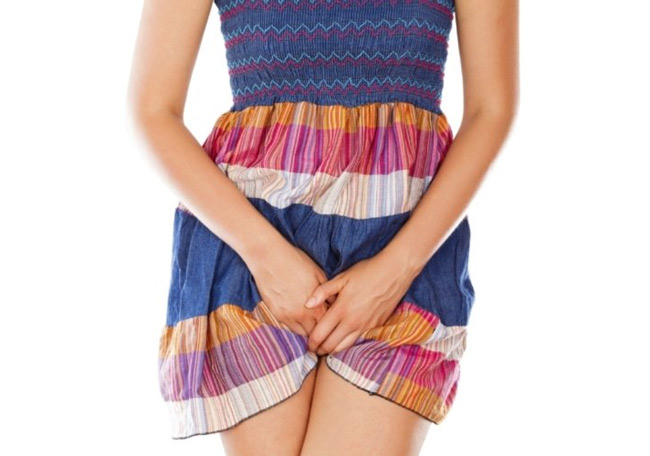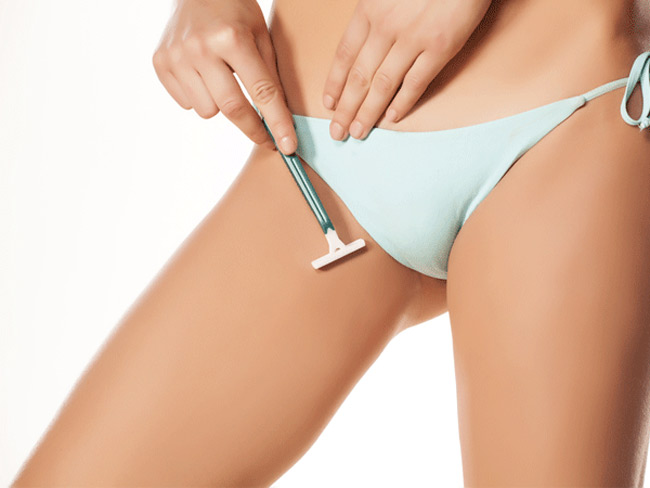
As women age and turn mature the need apart from skin sagging also need to take extra care for their vaginal health. Women Fitness brings to you a study on Anti Aging techniques for mature women vaginal health.
A study by the Association of Reproductive Health Professionals showed that more than half of women lack basic knowledge when it comes to understanding their genitalia. Misconceptions can prevent you from having a healthy, satisfying sex life, especially after you hit 40, so it’s important to know exactly what’s going on down there.
Just like every other part of the body, the vagina changes with age. Issues such as low libido, vaginal dryness and chronic pain can arise. But don’t be alarmed. All of these problems are common and can be solved.
Based on information gathered from leading gynecologists, Dr. Oz discloses what you need to know about your vagina after age 40 so you can maintain a happy, healthy sex life.
Thinning of the Vaginal Walls
In your 20s and 30s, the vaginal walls are bathed in hormones making them strong and robust. But as you enter your 40s, hormone levels, namely estrogen, gradually start to decline. This causes the walls, which are comprised of mucous membranes (vaginal mucosa) to become less resilient and more susceptible to trauma. Inflammation or tears are more likely to occur which can cause pain during sex.
To check for thinning vaginal walls, take a handheld mirror and observe the color inside the opening of your vagina. Deep pink signifies healthy vaginal tissue, whereas, pale or very light coloring can mean fragile vaginal mucosa. If you think you have a problem, see your gynecologist who will examine the entire inside of the vagina with a speculum.
Remember, even if you’re not exhibiting symptoms you still need to your gynecologist once a year for routine checkups.
Treatment
Treatment for thinning of the vaginal walls includes estrogen creams or tablets that can be inserted directly into the vagina; an estrogen patch you can change weekly; or a vaginal estrogen ring made of rubber or silicone, which can be kept in the vagina for 3 months. For an alternative to estrogen therapy, try moisturizing the vagina with a little olive oil.
Vaginal Atrophy
Reduced estrogen levels can also cause shrinkage of the vaginal mucosa, which results in narrowing of the vaginal opening called the vestibule. In this case, pain can occur during initial penetration but often subsides once the penis is deeper inside. About 90% of vaginal pain occurs in the vestibule region.
Treatment
Vaginal atrophy can be treated with vaginal dilators – available in different widths and sizes – to help improve the elasticity and pliability of the vagina. Treatment usually involves 5 minutes of daily use with a lubricant. Be sure to discuss with your gynecologist before trying this treatment.
Your pelvic floor – just like your biceps – is made of muscle. Sex on a regular basis actually helps keep your vagina in shape. Kegel muscle exercises help, too. Click here to learn how to exercise those love muscles.
Medication and Its Side Effects
Many common medications such as birth control pills, antihistamines and anti-depressants can cause vaginal dryness, which is already an issue after age 40, again due to lower estrogen. As a rule of thumb, medications that list dry mouth as a side effect also cause vaginal dryness. Low libido is another common side effect associated with hormonal change and/or certain medications, especially anti-depressants in the SSRI (serotonin reuptake inhibitors) category.
Treatment
A variety of lubricants – oil-, water- and silicone-based – effectively combat vaginal dryness. Talk to your gynecologist to see what brand they recommend. Saliva also works well as a lubricant and can enhance foreplay.
Misconceptions About the Female Orgasm
The better you know your body, the better your chance of having a fulfilling sex life. However, women after age 40 often suffer the same problem as they did at age 20: they obsess over finding the G-spot. But the G-spot is hardly the only road to sexual nirvana. Female orgasms can happen in a variety of ways including stimulation of the clitoris, the vagina or a combination of both areas.
According to the Mayo Clinic, the definition of vaginal atrophy is thinning and inflammation of the vaginal walls due to a decline in estrogen. Vaginal atrophy occurs most often after menopause.
It’s hard to believe that Mother Nature could be so cruel. Maybe it’s Father Time who is the source of the dry, itchy, inflamed vagina. No matter who is to blame, it’s a bum rap for menopausal women to suffer with vaginal unrest. As if you don’t have enough problems.
Because of the controversy regarding hormone replacement therapy, many women are turning to Mother Nature to find remedies for vaginal dryness, inflammation, and atrophy.
Natural anti-aging solutions that may help revitalize your aging vagina.
1.Vitamin E – vitamin E oil can help hydrate vaginal membranes. Just crack open a vitamin E capsule and apply the oil directly in the vagina to increase lubrication and soothe the vaginal lining.
2. Vitamin C – taking 500 – 1,000 mg of antioxidant-rich vitamin C daily is an excellent way to help protect the vaginal lining.
3. Zinc – if taken as a daily lozenge, zinc is good for immune support during a vaginitis outbreak. It is thought to revive vaginal tissue as well. Wheat germ, seafood, meat, and oats are all good food sources. However, do not take over 45 mg of zinc daily. (University of Maryland Medical Center).
4. Olive oil – the consistency of olive oil is remarkably close to the natural lubricant excreted from a woman’s vagina. It’s rich in squalane, a natural emollient that penetrates skin without leaving a greasy film behind.
5. Stop smoking – not only does smoking cigarettes age the rest of your body by impairing blood circulation, it deprives your vagina of oxygen. Decreased blood flow to your vagina may be a factor to atrophic changes.
6. Pelvic floor exercises – the staff at the Mayo Clinic reported that Kegel exercises can help prevent or control urinary incontinence and other pelvic floor problems. Having strong pelvic floor muscles will also strengthen your vagina muscles.
7. Healthy diet and exercise – essential for the support needed to rebuild hormonal levels, a proper diet and regular exercise will give your vagina a healthy balance it needs to thrive.
8. Sexual activity – whether you have a partner or you’re the sole provider of your body’s needs, good old-fashioned sex is the most natural approach to bring blood to the area and nourish your vaginal cells. It is definitely the most enjoyable.
Anti Aging Techniques for Mature Women Vaginal Health
Avoid the Yo-Yo
If you gain and lose, you can expect your vulva to flop. “The more swings in the size of an area, the more stretching,” says Pelosi. Equally important is maintaining a healthy weight. If you’re super skinny, your private parts can start to look as gaunt as your face as soon as aging sets in. “We see women who are 35 years old, but look much older because they have no fat in their face,” says Boyle. “Similarly, the labia majora can take on a saggy appearance-and once you lose that fat, you’re not going to gain it back.”
Kick up Your Kegels
You’ve probably read about the merits of Kegels a million times: tighter vagina! Better sex!-but there’s a good chance you’re still doing them wrong. “Women don’t do enough of them, and they don’t hold them for long enough,” says Pelosi. The routine he suggests: Contract your pelvic floor muscle five seconds, relax, and repeat 100 times, three times a day. Sound daunting? You can make Kegels fun by squeezing a few reps in during sex. You can imagine pinching your partner’s penis with those muscles, which helps you target the right spot (and gives your guy an extra, pleasurable sensation), Boyle says.
Ditch Your Office Chair
For a little extra workout-for your vaginal muscles, that is-trade your desk chair for a Swiss ball for 15 minutes a day. This forces the muscles of your pelvic floor to contract, without doing a single squeeze, says Pelosi. “It feels like nothing is happening, but it’s a very efficient way to keep the pelvic floor toned,” he says.
Stay Sexually ActiveThe whole “use or lose it” idea applies to your vag, ladies. “If you’re not getting stimulation and increased blood flow to that area, the tissue and muscle can change,” says Boyle. Blood flow is critical for lubrication (and orgasm)-which you naturally start to lose as you age. Plus, if you and your guy aren’t worried about pregnancy, his semen may have an anti-aging effect, thanks to the hormones, fatty acids, and anti-inflammatory compounds, say Spanish scientists.
Re-Think Long Bike Rides
Training for a triathlon? Know this: The constant friction of crotch-to-seat contact can pull and stretch your labia, especially if you have naturally pronounced outer lips, says Christine Hamori, M.D., director of Cosmetic Surgery + Skin Spa in Duxbury, Massachusetts.
Stick to Mild Cleansers
Scrubbing the living daylights out of your labia is not only unnecessary-a gentle cleansing will do, really!-but harsh soaps can leave you dry and irritated below the belt. “The labial tissue is so sensitive,” says Boyle. “You see women with very dry facial skin because they overuse products that suck water out of the cells. That can happen down there too.”
Switch Things up in the Sack
Take the reins and climb on top: “Being on bottom can sometimes cause stretching,” says Boyle. Why? Because your partner-not you-is usually controlling the pace and intensity of the thrusting, which means he may accidentally push past what’s physically comfortable for you. By contrast, when you’re on top, you’re in control-and “it’s much easier to contract those muscles when you’re on top,” says Boyle.
Gynecologists don’t tell women these things are going to happen, and then women come in shocked that their vagina and vulva have completely changed over the course of a couple years,” says Karen Boyle, M.D., an expert in female sexual health and vaginal rejuvenation.
Beginning as early as your 20s, you may lose fat in your outer labia and mons pubis (the mound of fatty tissue above your lips). “Those areas can start to sag-it’s volume loss, just like you’d have in your breasts or face as you age,” says Boyle. That’s often followed by changes inside your vagina (hello, stretching!), and as you approach menopause, the lining of your vagina starts to thin, blood flow decreases, and your pelvic floor muscles weaken, says cosmetic gynecologist Marco Pelosi, III, M.D.
And a sagging hoo-ha can be a confidence killer in the bedroom. A recent study in Psychology of Women Quarterly found that women who were dissatisfied with the appearance of their genitals had lower sexual self-esteem and satisfaction. “Not only do things look different, but things feel different,” says Boyle.
That may explain why vaginal rejuvenation is becoming increasingly popular-the number of procedures performed in the U.S. jumped 64 percent from 2011 to 2012, according to the American Society for Aesthetic Plastic Surgery. But you don’t have to seek plastic surgery to keep your lady parts looking and feeling young.
Hope this resource shall assist mature women have better vaginal health and it shall go a long way in fulfilling bedroom life.
